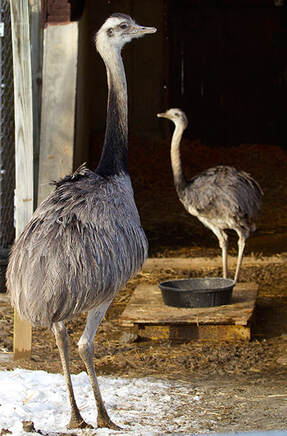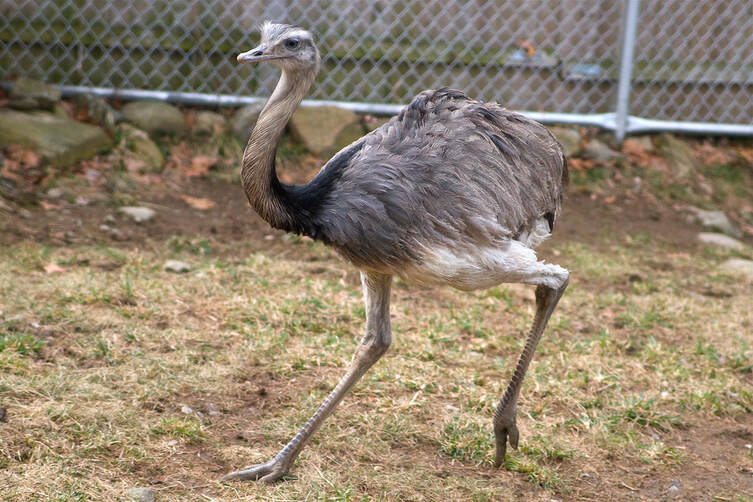Greater Rhea (Rhea Americana)

Physical Description: At up to five-feet tall and 90 pounds, this flightless bird is the largest of all South American birds. They have three claws on each foot of their long legs to help them outrun danger. Their five-foot wingspan helps with balance and changing direction as they run. They have fluffy, tattered-looking gray or brown plumage. Males are usually darker in color than females and are generally larger than the females.
Habitat: The Greater Rhea lives in open grasslands, grassy wetlands, and sparse woodlands.
Range: They are native to Argentina, Bolivia, Brazil, Paraguay, and Uruguay.
Diet: The Greater Rhea is an omnivore. They enjoy tough plant matter, fruits, and seeds, as well as insects, lizards, birds, and other small game. They sometimes swallow pebbles to help grind down their food for easy digestion.
Lifespan: They live 15 years on average in the wild.
Social Structure: Rheas breed in the warmer months, between August and January. Males have many different mates. Females lay their eggs, one every other day for a week or ten days, in a ground nest that the male builds. Several females deposit their eggs in the same nest, which may hold 50 or more eggs. The male hatches and raises the young. Once the eggs are hatched, he continues to rear the chicks, guarding them from any potential threat, including humans and even female rheas for the first six months. In winter, rheas are social and flock together. They often congregate with other large animals, such as deer and guanacos, and form mixed herds.
Status: Near Threatened1
Other: They are related to ostriches, emus, cassowary, and kiwis.
1 https://www.iucnredlist.org/species/22678073/219615764
Habitat: The Greater Rhea lives in open grasslands, grassy wetlands, and sparse woodlands.
Range: They are native to Argentina, Bolivia, Brazil, Paraguay, and Uruguay.
Diet: The Greater Rhea is an omnivore. They enjoy tough plant matter, fruits, and seeds, as well as insects, lizards, birds, and other small game. They sometimes swallow pebbles to help grind down their food for easy digestion.
Lifespan: They live 15 years on average in the wild.
Social Structure: Rheas breed in the warmer months, between August and January. Males have many different mates. Females lay their eggs, one every other day for a week or ten days, in a ground nest that the male builds. Several females deposit their eggs in the same nest, which may hold 50 or more eggs. The male hatches and raises the young. Once the eggs are hatched, he continues to rear the chicks, guarding them from any potential threat, including humans and even female rheas for the first six months. In winter, rheas are social and flock together. They often congregate with other large animals, such as deer and guanacos, and form mixed herds.
Status: Near Threatened1
Other: They are related to ostriches, emus, cassowary, and kiwis.
1 https://www.iucnredlist.org/species/22678073/219615764







